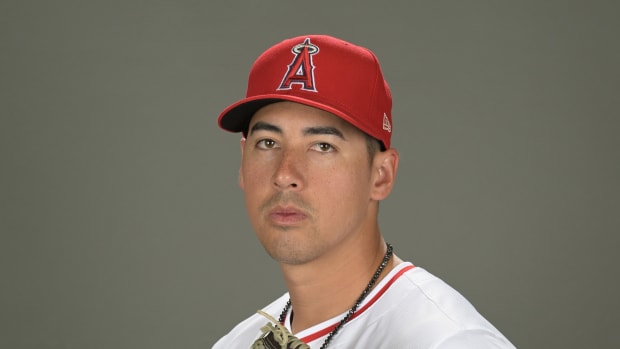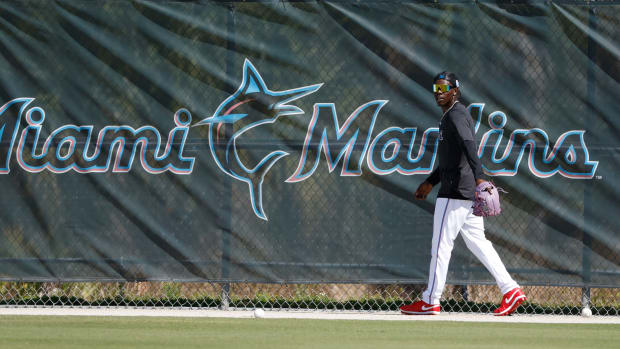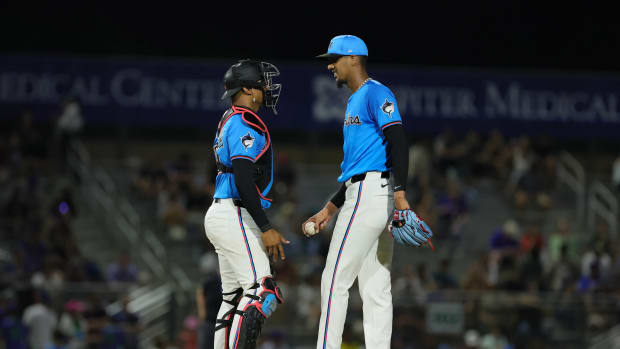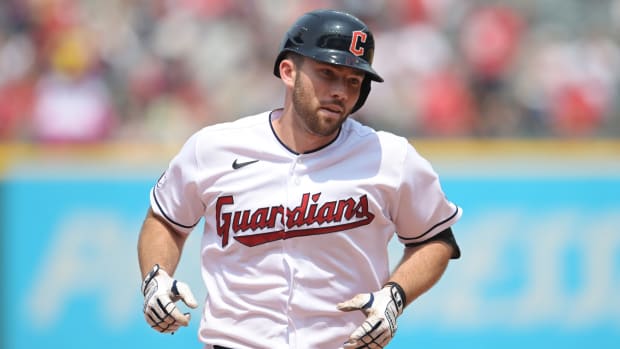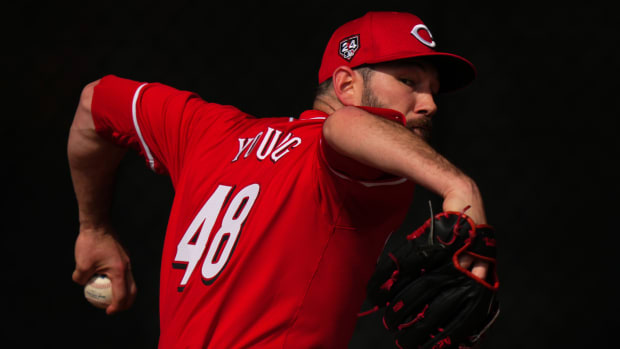Why Braves 2B Ozzie Albies Is Improving Despite Chasing More Pitches
Ozzie Albies had one of the most fascinating individual seasons of 2018. Sprinted out of the gate, looked like a shoo-in for NL Rookie of the Year through April, went in the tank in the second half, you already know the story. The time he spent at two opposite extremes last year made him one of the most intriguing players coming into 2019. Could he capture what he did in April and parts of May over a full season, launching himself to stardom in his age-22 season, or would substandard plate discipline be his undoing once again?
Take a look at Albies’ numbers, and you’d surely—with good reason—think the former is happening before our eyes. He’s hitting .289/.342/.496 with six homers, six doubles and 10 walks against 21 strikeouts in 146 plate appearances. His walk rate is up to 6.8% from last year’s 5.3%, and his strikeout rate, which was a surprisingly manageable 17% last year, is down to 14.4%. Those look like the numbers of a player who’s learned the lessons from last year’s dreadful second half and made the necessary adjustments to realize his full potential.
Dig a little deeper, however, and you’ll find that isn’t necessarily the case. Not about the full potential part—I am all in on Albies being a star for the next decade or so—rather, his plate discipline hasn’t improved at all. In fact, if it has changed at all, it’s gotten worse. Last year, Albies had an outside-swing rate of 39.6%. At the risk of stating the obvious, that means he swung at 39.6% of pitches he saw that were out of the strike zone. This year, that rate is up to 42.4%. Albies is swinging far more often at pitches he has no business handling, yet his numbers, most importantly his walk and strikeout rates, have improved across the board. What gives?
The biggest reason why Albies’ strikeout rate was just 17% despite him swinging at nearly 40% of pitches outside the zone is that he has excellent bat-to-ball skills. Albies’ 69.9% outside-contact rate was good for 31st in the league among the 140 hitters who qualified for the batting title. What’s more, when he did make contact on pitches outside the zone last year, he found uncommon success. Albies had a .314 BABIP on would-be balls last season, belting three homers on pitches outside the zone. The problem, however, was that he had a 12% whiff rate on such pitches, and was especially susceptible once he got into a two-strike count. Albies’ outside-swing rate rose to 42% with two strikes, and his whiff rate climbed to 16.2%.
This season, Albies’ outside-contact rate is all the way up to 79.1%, good for sixth in the majors. His whiff rate on pitches outside the zone is down to 8.8%, and he’s just as good when he puts the ball in play, registering a .368 BABIP with a homer and four doubles. We can take it at face value that making contact on pitches outside the zone, and doing so with authority, is a demonstrated skill for him.
The big difference, though, is in Albies’ performance with two strikes. His whiff rate on pitches outside the zone in two-strike counts this season is 15.2%, a full percentage point lower than what it was last year. His whiff per swing rate, meanwhile, is 29.3%, down from last year’s 38.5%. Making contact on pitches outside the zone isn’t only about putting the ball in play and doing damage. Quite often, simply fouling off a tough pitch outside the zone is a win for the hitter. Albies has fouled off 19% of the pitches he has seen outside the zone with two strikes, and 36.7% of the ones at which he has swung. Last year, those rates were 13.6% and 32.3%, respectively.
These are clear and obvious signs of a growing, maturing hitter who understands his own strengths, how pitchers are going to attack him, and how to accumulate minor victories to lead to a major one. There’s just one more factor we have to look at before we tie a bow on this one.
Pitchers have always loved to go up and out of the zone with fastballs in two-strike counts, especially when they’re ahead. If we had reliable video from MLB in the early 20th century, we’d likely see footage of Walter Johnson and Cy Young climbing the ladder in 0-2, 1-2 and even 2-2 counts. It’s been a hallmark of baseball tactics as long as the game has existed.
Last year, this tactic overwhelmed Albies. He swung at 32.8% of the fastballs out of the zone he saw with two strikes, and whiffed at 19.8% of them. This year, his swing rate on such pitches is down to 12%, and he has yet to swing and miss at a two-strike fastball outside the zone all year.
In a traditional sense, Albies’ plate discipline hasn’t improved one bit this season. In a modern sense, however, it has gotten markedly better. Given his bat-to-ball skills and ability to put the ball in play with authority on pitches outside the zone, he should be swinging at pitches other hitters would let go by. The strides he has made in pitch identification and approach, especially with two strikes, are turning him into the star he showed he could be in last year’s first half. Don’t worry about a high outside-swing rate for a player like Albies. It’s all part of the plan.































